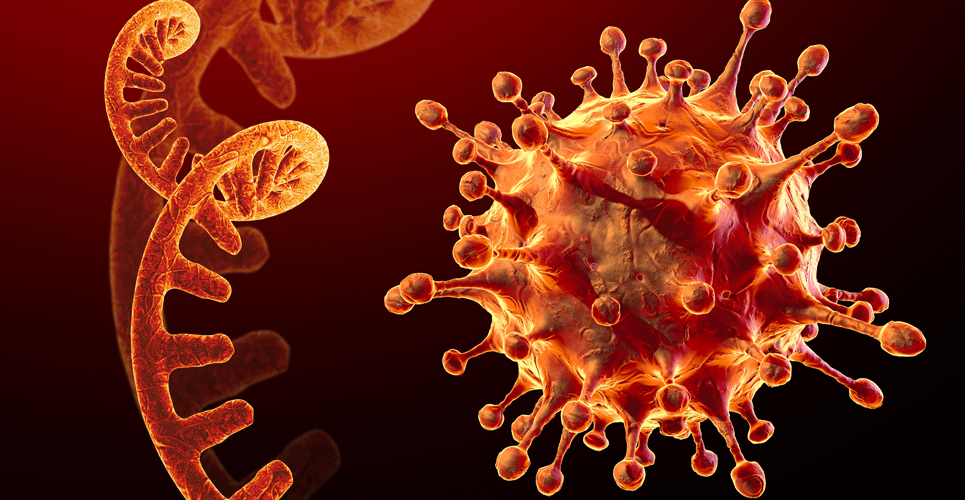An RNA aptamer which attaches to the spike protein of COVID-19 preventing entry into cells offers a potential alternative form of treatment
An RNA aptamer which was specifically developed to bind with the receptor binding domain (RBD) of COVID-19’s spike protein, has been shown to block entry of the virus into cells and could serve as a promising treatment for the virus. This is according to preliminary findings by researchers from the Interdisciplinary Nanoscience Center, Aarhus University, Denmark.
RNA aptamers (RNA AP) are single strands of RNA (i.e., RNA oligonucleotides) designed to bind with high affinity and specificity to a specific target, in much the same way that an antibody binds to an antigen. In recent years, RNA aptamers have been found use in medicine both diagnostically and therapeutically in the management of viruses.
For the present study, the Danish team described the development of a serum-stable, RNA AP, which they named, RDB-PB6 designed to bind with nanomolar affinity, to the RBD of the COVID-19 spike protein, with a view to neutralising the infectivity of the virus. The aptamer contains 2-fluoropyrimidine modifications, increasing its chemical stability and resistance to degradation by viral nucleases.
By developing the RNA AP specifically targeting the spike protein which is used by COVID-19 to bind with the angiotensin converting enzyme 2 (ACE2) receptor to gain entry into cells, the researchers sought to determine if this binding would prevent cellular entry. Their analysis revealed how RBD-PB6 bound with high affinity to the virus RBD alone but also interacted with the spike protein. This latter binding was subsequently confirmed in a separate experiment, confirming how once bound to the spike protein, this complex was unable to interact with the ACE2 receptor.

Using virus-like particles the researchers were able to show that RBD-PB6 was highly specific and unable to bind effectively with other viruses such as the Middle East Respiratory syndrome (MERS) or Severe Acute Respiratory Syndrome (SARS), indicating no cross-reactivity despite the similarity in the RBD sequence of these two coronaviruses. Finally, the Danish team examined whether RBD-PB6 could still bind to COVID-19 variants and tested this with the alpha and beta variants. They demonstrated high affinity binding between RBD-PB6 and the two variants suggesting that these mutated strains were still able to recognise RBD-BP6.
The authors described how RBD-PB6 was very easy to mass produce and that this could be achieved in a fast and reproducible way using conventional synthetic methods, adding that it was a potentially less expensive treatment compared to monoclonal antibodies. They concluded that their RNA aptamer provided a promising lead for COVID-19 treatment and a cost-effective platform for the rapid diagnosis of the virus.
Citation
Valero J et al. A serum-stable RNA aptamer specific for SARS-CoV-2 neutralizes viral entry PNAS 2021

